The Slow boot issue affects quite a large number of Windows users after the Windows 10 Anniversary update. Though the new system makes you enjoy the new features, the long boot time or restart period is very influential in the continuity of the office work. So today let's see how to fix the slow boot-up problem.
How to Fix Windows 10 Anniversary Slow Boot Issue
Here are 8 efficiency methods for you to check the causes of the Windows 10 slow boot and fix the problem.
Method 1: Clean up the Dust Regularly
Dust ages the components of the computer and slows down the running of the hardware.
For example, if there is accumulative dust on the PC fan, the device will be overheated and result in the Windows 10 slow boot. Besides, the dust in some slots can also result in mouse and keyboard not working, graphics not showing, Windows 10 DRIVER_IRQL_NOT_LESS_OR_EQUAL error, etc. So clean the dust out of you desktop regularly with a brush or a blower, and then power on the device to see if it speeds up the boot time.
Method 2: Manage Files or Shortcuts on the C Drive
Computer startups are loaded from the C drive every time you boot the device. If there are too many programs on the C drive, Windows 10 will take a long period to load the startups, which slows down the PC booting.
1. Remove Unnecessary Files to Fix the Slow Boot Issue
Kill off your icons or shortcuts on the desktop and remove the files from the C drive that are seldom used. This will avoid the long pre-loading of the shortcuts when you reboot the computer.
2. Install Software on Other Disk Drives
If there are large sizes of programs or software installed on the C drive, the memory room will be occupied and the slow boot issue will occur. So install or reinstall those programs on other drives. This will protect your important data once you have to reinstall the Windows as well as speed up the PC booting.
In addition, don't install too many anti-virus programs, because they take much space and need to start each time you boot, which will slow down the booting.
Read More:
Method 3: Perform the Disk Cleanup Regularly
Some files or programs may not be deleted thoroughly, which adds loading to the PC booting and causes the slow boot. So it is necessary to perform the disk cleanup regularly.
1. Use Windows shortcut keysWin + E to launch the File Explorer.
2. Right click on the C drive and select Properties.
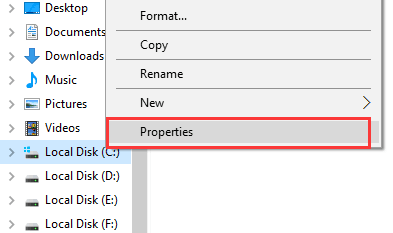
3. Choose the General tab and click on the Disk Cleanup button.
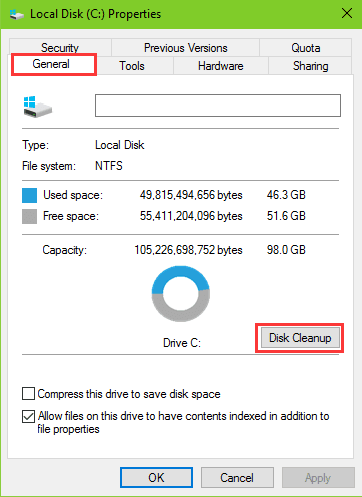
4. Check the files that you want to delete, and then click on OK.
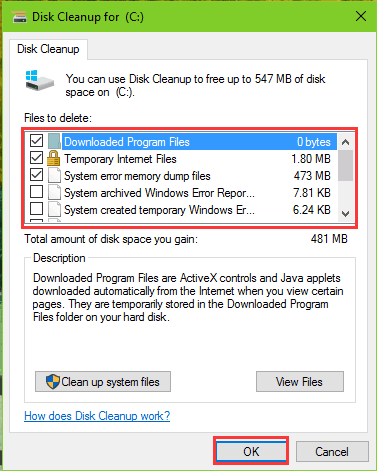
Note: You could determine whether the files should be deleted permanently, but if you delete the folder C:\Windows.old, which stores the old installation files, you won’t be able to downgrade Windows 10 to its predecessors.
Method 4: Optimize the Startups and Fix the Slow Boot Issue
Some unnecessary software or services will start automatically when you boot the computer. This will cause a long boot or slow PC on Windows 10. Follow the steps below to kill off these startups or services.
1. Use Windows shortcut keys Ctrl + Shift + Esc to launch Task Manager.
2. Choose the Startup tab. Highlight current startups according to their Startup impact and click the button to Disable them. (Note: Don't disable the crucial security programs.)
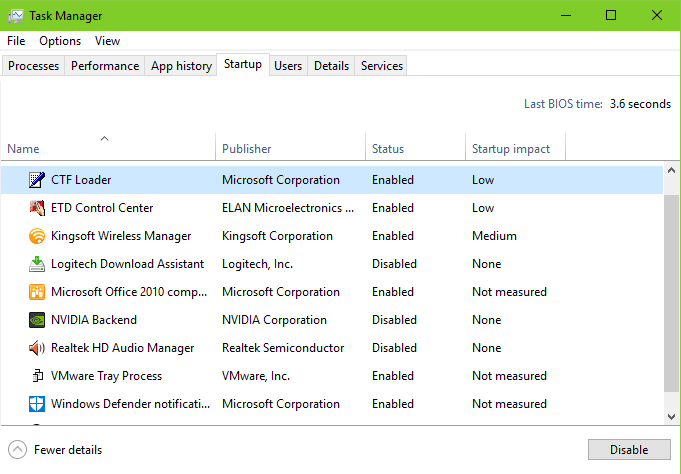
3. Choose the Services tab. Right click on the service you need to disable and select Stop. (Note: You can also click the link Open Services below to check more details.)
Read More: How to Open Windows Services in Windows 10, 8.1, 7, Vista, XP
Note: If you ain't sure which startups or services should be disabled, it is recommended to use some third-party system software, like OSToto PC Speeder, to optimize the startups and services.
Method 5: Turn in Windows 10 Fast Startup
Turning on fast startup also helps to release the pain of the Windows 10 Anniversary slow boot.
1. Right click on the Start menu and select Power Options.
2. Click Choose what the power buttons do from the left column.
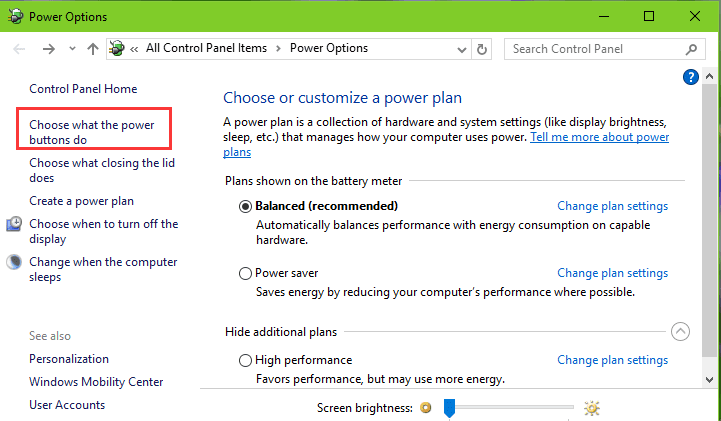
3. Click Change settings that are currently unavailable to activate the Shutdown settings below.
4. Enable the Turn on fast startup and click on the Save changes button.
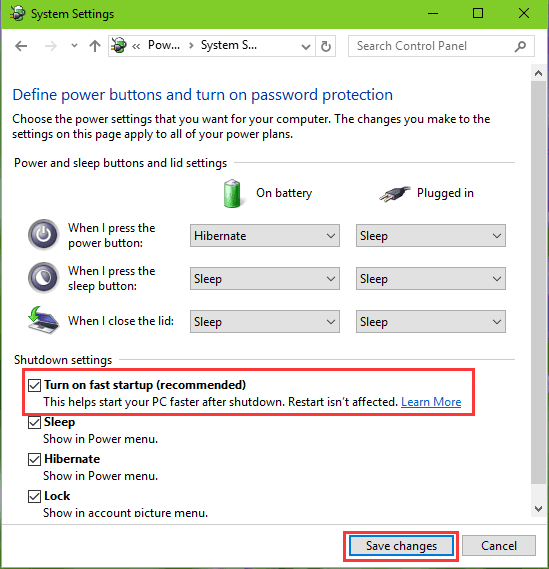
Read More:
Top 5 Easy Ways to Save Laptop Battery in Windows 10, 8, 7, Vista, XP
Top 4 Ways to Fix "Driver Power State Failure" Error in Windows 10, 8.1, 8, 7, Vista, XP
Method 6: Enable Faster Booting Sequence
If you want to skip the spinning Windows LOGO and speed up the booting, try this method to shorten the boot time and fix the slow boot.
1. Use Windows shortcut keys Win + R to launch Run and type into msconfig. Press the Enter.
2. Choose the General tab and activate Selective startup. Also, enable the two items below: Load system services and Load startup items. Click on Apply.
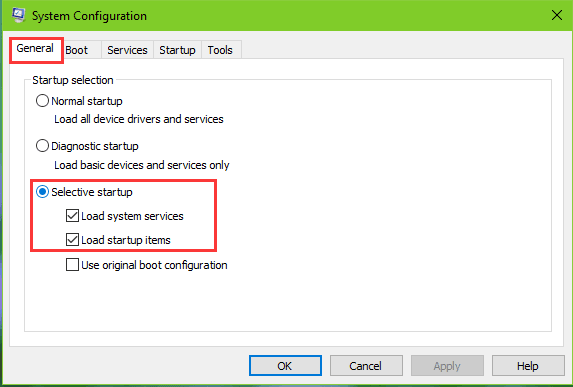
3. Choose Boot tab and modify the Timeout to 3 seconds. Click on Apply.
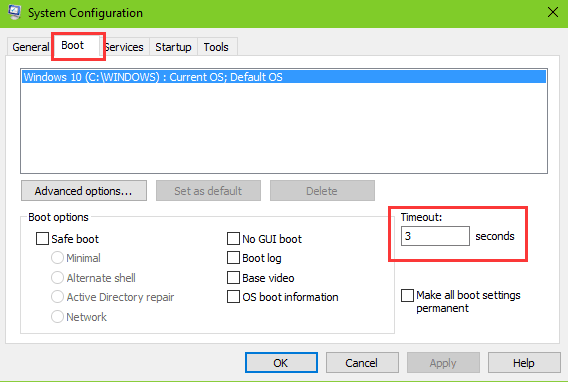
4. Click on the Advanced options button and then select the maximum processor from the drop down menu of Number of processors. Click on the button OK.
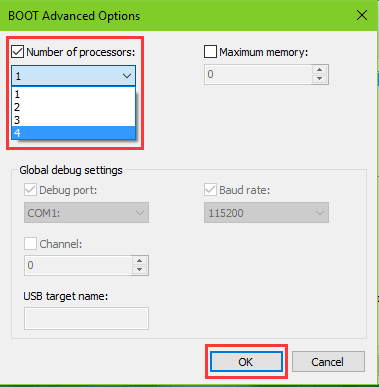
5. Click on OK. Power off the PC and boot again. The Windows 10 Anniversary should now boot a lot faster than before.
Method 7: Update Drivers and Fix the Windows 10 Slow Boot Issue
Outdated or incorrectly configured drivers in Windows 10 Anniversary also result in the slow start or long boot issue. Other computer problems like random restarts, no mouse pointer, MTP connection problem, etc. are also caused by faulty drivers. Some users have reported that updating the AMD or NVIDIA graphics drivers fixes the slow boot issue.
1. Right click on the Start menu and select Device Manager.
2. Expand each entry to see if there are yellow exclamation marks beside the devices.
3. If so, right click on the device and select Update Driver Software. Then Windows 10 will do its jobs on to update the driver.
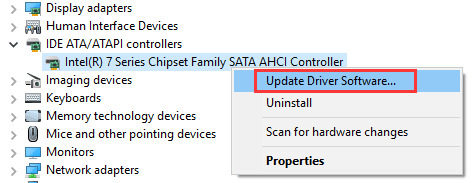
Sometimes, broken drivers really exist, but you cannot check them out from the Device Manager. Or Windows 10 Anniversary fails to update them automatically. In this case, you need to use some third-party software, for example, Driver Talent, to help you fix the driver problem and resolve the slow boot issue.
You could click the button above to have such a safe driver troubleshooter, which will fix the problem instantly in just one click. For more information of Driver Talent, click here.
Method 8: Reinstall Windows 10 Anniversary
This is the thorough way to solve the slow boot in Windows 10 Anniversary, if all above methods still fail to speed up your boot time. It is no doubt that a fresh install of Windows 10 can really release the pain.
Note: For those who are technical on computer, you could also try modifying the Registry, adjusting virtual memory settings, delete malware or virus, etc. to fix the slow boot-up issue.
Hope this article can be a reference for you to resolve the slow boot issue in Windows 10 Anniversary. If you still have questions above it, comment below please. Any other Windows 10-related issues, check Windows 10 Issues and Fix on this site for solutions.
Related Posts:









